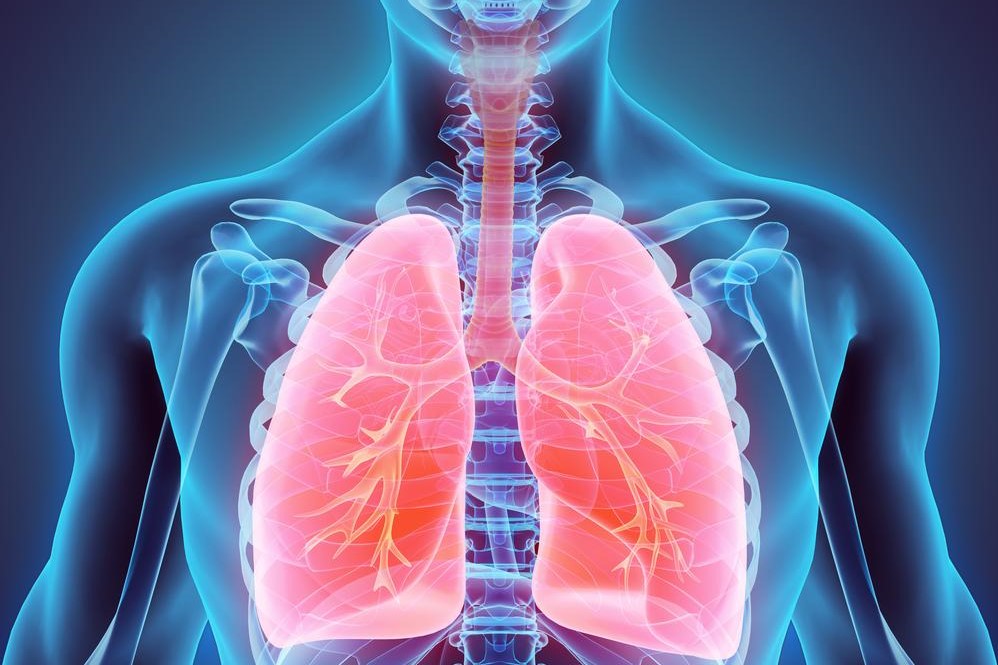Survival Rates for Non-Small Cell Lung Cancer
Non-small cell lung cancer, or NSCLC, is considered the most prevalent type of lung cancer, affecting more than 85% of total lung cancer patients. Non-small cell lung cancers characterize squamous cell carcinomas, large cell carcinomas, and adenocarcinomas tumors of the lung so survival rates often differ due to several factors, including:
- How far the cancer has advanced–treatment for early stage cancers are often more successfully treated.
- If the cancer has spread beyond the lungs to the chest, diaphragm, and lymph nodes.

The treatment route recommended for non-small cell lung cancer patients will depend on the above mentioned factors and will often include radiation, chemotherapy, or surgery or a combination of these to slow the cancer progress while also alleviating cancer symptoms.
The following represent the global 5-year survival rates for non-small cell lung cancer patients, according to the American Joint Committee on Cancer and the American Cancer Society by stage…
Stage IA1 refers to adenocarcinomas considered minimally invasive and no larger than 3 centimeters (cm) in width with no invasion into nearby lymph nodes or other parts of the body. Invasion into the deeper lung tissue must be less than ½ cm. The 5-year life expectancy for patients with stage IA1 NSCLC is 92%
Stage IA2 refers to tumors between 1 cm and 2 cm across with zero invasion into the surrounding membranes of the lungs, main bronchi, nearby lymph nodes, or other areas of the body. The 5-year survival rate for patients with stage IA2 NSCLC is 83%.
Stage IA3 refers to tumors between 2 cm and 3 cm wide. There will be zero spreading into the surrounding lung membranes, main bronchi, nearby lymph nodes, or into other parts of the body. The 5-year life expectancy for stage IA3 NSCLC patients is 77%.
Stage IB is characterized by tumors between 3 cm and 4 cm wide that have spread to the
main bronchus or lymph nodes, but it may have invaded the membranes surrounding the lungs and partially clogged the airways. The 5-year survival rate for people with stage IB NSCLC is roughly 68%.
Stage IIA cancers are typically 4 cm to 5 cm in size. They may have spread to the main bronchus and/or the membranes surrounding, causing partially blocked airways, but haven’t invaded the lymph nodes or other parts of the body. The 5-year life expectancy for IIA NSCLC patients is 60%.
Stage IIB cancers have spread to lymph nodes, but not to other areas of the body. The survival rate for IIB NSCLC patients is approximately 53%.
Stage IIIA tumors range between 3 cm and 5 cm with invasion into the main bronchus, visceral pleura, and lymph nodes, but not yet to other areas of the body. Survival rates are 36%.
Stage IIIB cancers are larger than 7 cm in size. Life expectancy for IIIB NSCLC is roughly 26%. These tumors tend to penetrate on or more of:
- the mediastinum (or the space between the lungs)
- the heart and large blood vessels
- the esophagus
- the backbone, and
- the lymph nodes of the windpipe
Stage IIIC cancers exceed 7 cm in size and in 2 or more tumor modules in different lobes of the same lung. Survival rate for IIIC NSCLC is approximately 13%. These tumors have spread into one or more of these areas:
- Space between the lungs (or mediastinum)
- Heart
- Windpipe (or trachea)
- Large blood vessels of the aorta
- Esophagus
- Diaphragm
- Backbone (or spine)
- the lymph nodes of the collarbone and the hilar or mediastinal lymph nodes.
IVA NSCLC has often spread to both lungs, including the fluid surrounding the lungs and heart, and has grown outside of the chest to lymph nodes or other organs (i.e., brain, liver, or bones). The 5-year survival rate for IVA NSCLC is 10%
Stage IVB cancers often spread in multiple tumors to nearby lung and chest tissues, lymph nodes, and other organs (i.e., bones, liver, and brain). The 5-year life expectancy is less than 1%.




